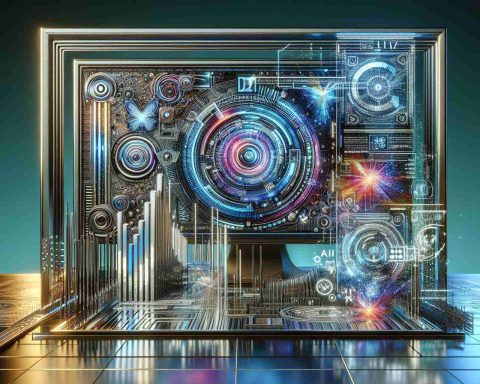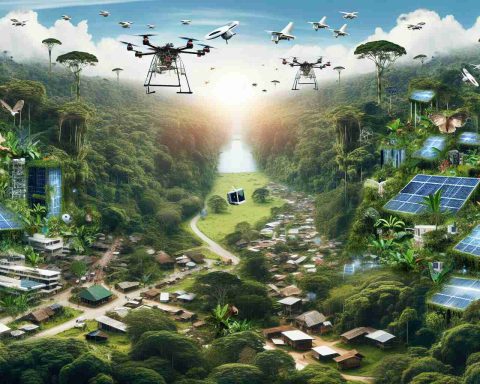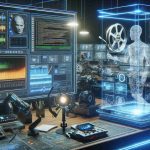The emergence of artificial intelligence (AI) is reshaping various sectors, including the art world. This technology is becoming increasingly prevalent and accessible, prompting lively discussions among artists and creators. Traditional artistic creation is deeply tied to individual expression, personal history, and cultural influences, leading many to express skepticism about whether AI can truly generate meaningful artistic works. However, there are artists like Pedro Sandoval who are embracing AI, viewing it as a tool rather than a replacement for human creativity.
Pedro Sandoval is a respected artist with a global presence, known for his innovative approach. Encouraged by his early experiences and significant interactions with iconic figures like Andy Warhol, Sandoval sees AI as another paintbrush in his artistic toolkit. He emphasizes that AI should not be feared; instead, it should be refined and directed by the artist to produce unique creations.
The artist’s insights reveal that AI-generated art is still firmly rooted in the creator’s vision and skills. In his view, while AI can learn styles and techniques from various artists, the distinctive touch ultimately belongs to the artist. This interplay between technology and human creativity is vital for the evolution of art.
Looking forward, Sandoval advocates for a balanced approach to technology in education. He believes that while AI offers exciting possibilities, understanding and appreciating historical cultural contexts is essential for the new generation of artists.
The Role of AI in Modern Art: Exploring New Horizons and Complexities
The integration of artificial intelligence (AI) into the realm of art is not just an emerging trend but a transformative movement that continues to spark debate among artists, critics, and audiences alike. As AI technologies become more sophisticated, they raise profound questions about creativity, authenticity, and the essence of art itself.
What Are the Benefits of Using AI in Art?
One of the primary advantages of AI in art is its ability to assist artists in the creative process. AI can analyze vast datasets of existing artwork, recognizing patterns and styles that may inspire new forms of expression. For example, AI can generate unique color palettes or suggest compositions, offering artists a fresh perspective that may not be achievable through conventional methods. Additionally, AI tools can democratize art creation by making artistic techniques more accessible to those who may lack formal training.
Another significant benefit is the potential for innovation. Collaborations between artists and AI can lead to unexpected and groundbreaking outcomes, pushing the boundaries of what is considered art. This synergy has already been witnessed in media installations, generative art, and even music composition, where AI has significantly broadened the scope of what artists can achieve.
What Are the Challenges and Controversies Surrounding AI in Art?
Despite its promising attributes, the involvement of AI in art is riddled with complexities. One of the most pressing questions is about authorship and ownership. If an AI generates artwork, who holds the rights to that piece? This dilemma complicates traditional notions of authorship and could lead to legal battles over intellectual property. Furthermore, the rise of AI in art has raised ethical concerns regarding the potential for reducing the value of human-crafted art.
Another challenge is the risk of homogenization. Critics argue that AI-generated art could lead to a dilution of originality as machines replicate existing styles and artworks referenced in their training datasets. This poses a threat to the diversity of human expression, as unique cultural or emotional narratives may be lost in favor of algorithmically designed outputs.
Advantages vs. Disadvantages of AI in Art
Advantages:
1. Increased Accessibility: AI tools lower the barrier to entry for aspiring artists.
2. Enhanced Creativity: AI can offer innovative ideas and solutions, pushing creatives toward novel artistic directions.
3. Efficiency: AI can streamline creative processes by automating repetitive tasks, allowing artists to focus on their vision.
Disadvantages:
1. Authenticity Concerns: The lack of human touch in AI-generated works raises questions about authenticity.
2. Intellectual Property Issues: The ownership of AI-created art remains murky and contentious.
3. Risk of Homogenization: AI might produce art that lacks diversity and genuine cultural representation.
Looking Ahead: The Future Intersection of AI and Art
As we consider the future, it is essential to acknowledge the dual role of AI as both an enabler and a challenger in the artistic landscape. Artists and technologists must collaborate to address the ethical and philosophical questions raised by AI in art. Educational institutions also play a critical role; by teaching emerging artists about AI tools while instilling a robust understanding of art history and cultural significance, they can prepare a new generation equipped to navigate this complex terrain.
For more information on the intersection of technology and creativity, visit CreativeApplications to explore how technology is influencing art and design.
In conclusion, AI in modern art offers exciting possibilities alongside significant challenges. By fostering an environment of collaboration and critical inquiry, the art community can navigate this brave new world where human creativity and artificial intelligence coexist and thrive.

















